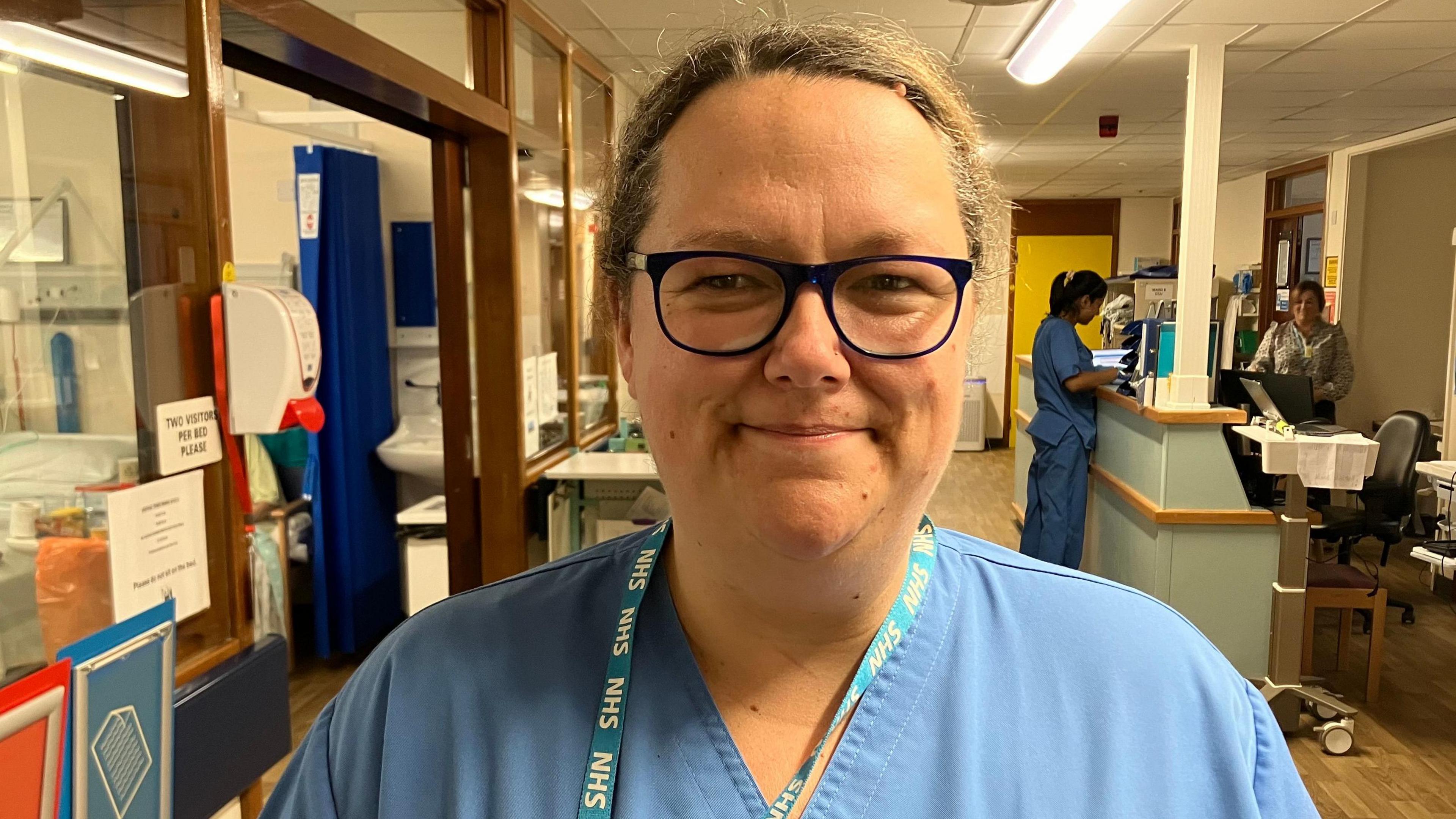Raac issues ‘not going away’ at affected hospital

Six wards were closed at Withybush Hospital last year after Raac was found
- Published
Issues with reinforced autoclaved aerated concrete are “not going to go away, ever”, a hospital manager says.
Malcolm Arnold, estates manager for Withybush Hospital in Haverfordwest, Pembrokeshire, said Raac would need to be managed and surveyed "for the lifetime of the building".
It comes as six wards at the 12-ward hospital – which closed more than a year ago and later reopened - will have to temporarily shut while re-surveying work takes place at the end of this year, according to Hywel Dda health board.
But Andrew Carruthers, the health board’s chief operating officer, said the work would "not be anything like the scale we’ve seen of the changes over the last year".
Six hospital wards hit by crumbling concrete open
- Published23 April 2024
Faulty concrete likely in Wales, says expert
- Published1 September 2023
Concrete: How safe are buildings in Wales?
- Published20 September 2023
Raac was used mostly in flat roofing, but also in floors and walls, between the 1950s and 1990s. It is a cheaper alternative to standard concrete, but is also less durable and has a shorter lifespan.
Last year schools, hospitals and other buildings including markets were among the buildings in Wales found to contain the material.
This included Withybush Hospital, where a major incident was declared and six wards, as well as other areas, were forced to close.
The six wards reopened in April, while other areas such as outpatient clinics and kitchens have also returned. Other departments, such as those used for physiotherapy and pharmacy, are expected to reopen in the coming weeks.
Sarah Davies, a nurse who works on one of the reopened wards, said “it feels so good to be back”.
“You can hear the alarms going off now. It’s just nice to have noise here,” she said.
A&E sister and clinical lead Lea Jones said it had “been slightly easier” since they reopened.
“But we’re going back into winter pressures now, so we always have problems this time of year anyway – it has been easier for us knowing that these wards are back open.”

Nurse Sarah Davies is glad to be back working on the ward in its original location
The health board has now said the affected wards will be temporarily closed again later this year, with a planned reopening in 2025.
Surveys will also be conducted on ground floor areas in 2025 and 2026.
Ms Davies, the nurse, described it as one step forward “two back”, but said “it needs to be done for the safety of the building, safety of the staff, safety of the patients”.
Mr Arnold, the hospital’s estates manager, said the inspection is “a process we need to go through”.
Asked whether the hospital would be dealing with Raac into 2026 and beyond, he said: “Absolutely.”
“It’s something that’s not going to go away, ever. We’re going to constantly have to manage and survey the Raac on a continued basis for the lifetime of the building.”

Half the wards at Withybush Hospital closed last year after Raac was found
Mr Carruthers, from the Hywel Dda health board, said the hospital is “definitely over the worst” of the Raac issue, adding that the re-surveying work will “not be anything like the scale we’ve seen of the changes over the last year”.
“It will be small areas of the facility that are relocating,” he said, adding that “it will be for a very short period of time”.
He added that it is an issue that the hospital will have to treat as a “business as usual”, and “just one that we’ll have to continue monitoring and working with for the coming months and years”.
The Welsh government said it has approved £12.8m for work in areas impacted by Raac at Withybush Hospital, with a spokesperson saying “excellent progress has been made”.
As well as Withybush, extensive Raac has also been found in non-patient areas in Nevill Hall Hospital in Abergavenny.